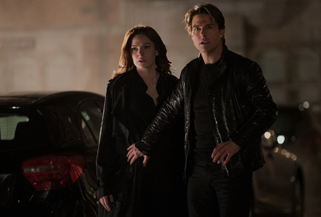|
|
Movie Review: Mission: Impossible - Rogue NationBy Ben GruchowAugust 4, 2015
I was perhaps being a little overly charitable. Rogue Nation's biggest problem is still that it comes after Ghost Protocol; its next biggest problem is that the movie can't help but take a step down in urgency and clarity after its central action set piece, which occurs about halfway through the film. That sequence revolves around fooling a power station's security system so that an IMF agent can pass a series of intelligent cameras and body-language detectors and get into the top-secret control room and download encrypted data containing Syndicate names. Whatever. The sequence is an excuse, as all of the big sequences in the Impossible films are, to show off the very limits of feasible technology to achieve exciting scenes of tension and agility. This one doesn't disappoint, although it's a notch or two below the Dubai sequence and the Langley break-in from the first Mission: Impossible. In fact, I'm pretty confident that the next appropriate obstacle for the team is going to have to be outright sorcery; that's the only thing that'd present much of a challenge (Cruise's facial acting when Simon Pegg's Benji describes the layers of security around the power station, and continually expresses confidence in Hunt's covert abilities, is a minor highlight). So, not the best heist centerpiece in the franchise; the power-station sequence is still thrilling. Most of the action takes place in an underwater core that looks rather like the nexus of the Death Star. Ethan Hunt must swap out ID cards while dodging rotating mechanical arms and water current, all on a strict three-minute oxygen timer (he can't use oxygen tanks, because then there wouldn't be a scene). The team around him is mostly old faces: Ving Rhames returns as disavowed agent Luther Stickell, Jeremy Renner's Brandt spars with CIA director Alan Hunley (played by Alec Baldwin in the film's one completely superfluous and anonymous role), and Renner scores the movie's best punchline in these scenes.
|

|
|
|

|
Thursday, October 31, 2024
© 2024 Box Office Prophets, a division of One Of Us, Inc.


